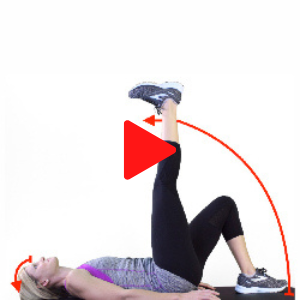Sciatic Nerve Flossing
Reading time: 3 minutes
Are you looking for practical tools to help manage challenging sciatica cases? If so, this blog can help. We’ll answer your top questions about sciatic nerve flossing and show you how to incorporate this powerful technique into your evidence-based chiropractic treatment protocols.
1. Is Sciatica Nerve Flossing Effective?
Neurodynamic treatments, including the sciatic nerve floss, have been shown to improve pain and ROM for lumbar spine-related radicular complaints substantially. (1-3) One systematic review of forty chronic low back pain studies found that nerve mobilization improved the average Oswestry score by 9.3 points and the average VAS by 1.8 points. (2)
2. How Does Flossing The Sciatic Nerve Help?
Nerves are dynamic structures that need the ability to glide and stretch. (4) Edema and fibrosis can impair this normal nerve movement and often translate into neurogenic complaints, like sciatica.
Sciatic nerve flossing entails tensioning one end of the nerve while simultaneously releasing tension on the other end. This repetitive motion glides the nerve back and forth through its path and aims to release adhesions that have developed along the way. Therapeutic nerve flossing can be performed in-office by the clinician and as part of a home-based program.
3. How To Perform Nerve Flossing For Sciatica In-Office
The patient is supine with their affected leg extended. The clinician begins by flexing the patient's hip (SLR) while the patient holds their neck in extension. The patient is instructed to flex their neck as the clinician lowers the patient's leg. The flossing pattern should be repeated ten times, from the starting position to the end position. Flossing motions should not create or intensify any radicular complaints.
Want to learn more about resolving the top causes of sciatica?
Watch our LBP Masterclass: Managing Lumbar Disc Lesions and Degeneration
This on-demand webinar is a real-world, best practice discussion of the most common lumbar disc problems. Learn what current literature teaches us about the most sensitive and specific assessments, the most effective chiropractic treatments (including sciatic nerve flossing), and the best exercise protocols. You’ll leave this presentation with new skills to help solve these challenging and potentially debilitating problems.
4. Sciatica Nerve Flossing Home Exercises
Clinicians can complement their in-office care by prescribing home versions of the sciatic nerve floss. Patients can perform home-based sciatic nerve flossing in any one of three positions.
ChiroUp subscribers can review the following home exercise videos from the links below or via their Clinical Skills/Treatment Techniques tab 24/7. Then, rest assured that your condition reports already include a nerve floss for your sciatica patients.
*Pro Tip: Clinicians should consider avoiding sciatic nerve flossing in the seated position for extension-biased patients, i.e., those whose radicular symptoms improve with extension (standing) and likely worsen with flexion (sitting).
-
1. Alshami AM, Alghamdi MA, Abdelsalam MS. Effect of Neural Mobilization Exercises in Patients With Low Back-Related Leg Pain With Peripheral Nerve Sensitization: A Prospective, Controlled Trial. Journal of Chiropractic Medicine. 2021 Jun 1;20(2):59-69. Link
2. Basson A, Olivier B, Ellis R, Coppieters M, Stewart A, Mudzi W. The effectiveness of neural mobilization for neuromusculoskeletal conditions: a systematic review and meta-analysis. Journal of orthopaedic & sports physical therapy. 2017 Sep;47(9):593-615. Link
3. Almeida RS, Machado E, Yamato TP, Santos De Melo L, Nogueira LA. Pragmatic neural tissue management improves short-term pain and disability in patients with sciatica: a single-arm clinical trial. Journal of Manual & Manipulative Therapy. 2019 Aug 8;27(4):208-14. Link
4. Wilgis EF, Murphy R. The significance of longitudinal excursion in peripheral nerves. Hand Clin. Nov 1986;2(4):761-6. Link







